Samples are the intriguing backbone of numerous music genres, like hip-hop, trap, and pop.
It provides a rich tapestry of unique sound from which producers can draw inspiration and create legendary tracks.s
Chopping samples can unlock a world of creative possibilities 一 enabling you to manipulate, rearrange, and reimagine sounds to create distinctive musical landscapes.
It’s an intricate art form that, when mastered, can add depth, texture, and uniqueness to any track.
As well as help your music stand out and rise above the competition.
In today’s article, we’ll discuss everything you need to know about chopping samples to infuse that unique flavor into your tracks.
We will be covering:
- How to chop samples like a pro ✓
- The tools required ✓
- Sample slicing ✓
- Unique chopping techniques ✓
- Creative Approaches ✓
- Advanced sample-chopping tips & tricks ✓
- So much more ✓
By the end of this article, you’ll be able to manipulate samples with precision and creativity.
Plus, you’ll be able to seamlessly incorporate intricate layers and addicting rhythms to your compositions with no problem.
Whether you’re a new producer or a seasoned vet, these insights will help you to elevate your music to new heights and display the limitless potential of sample chopping.
So, let’s dive in…
Table of Contents
- The Art of Chopping Samples: Breaking it Down
- The Tools You Need to Start Chopping Samples
- Understanding Sample Slicing
- Techniques for Chopping Samples
- Creating Unique Patterns From Your Chops
- Creative Approaches to Sample Chopping
- Bonus: Experimenting with Drum Breaks & Drum Kits
- Chopping Samples: Final Thoughts
The Art of Chopping Samples: Breaking it Down
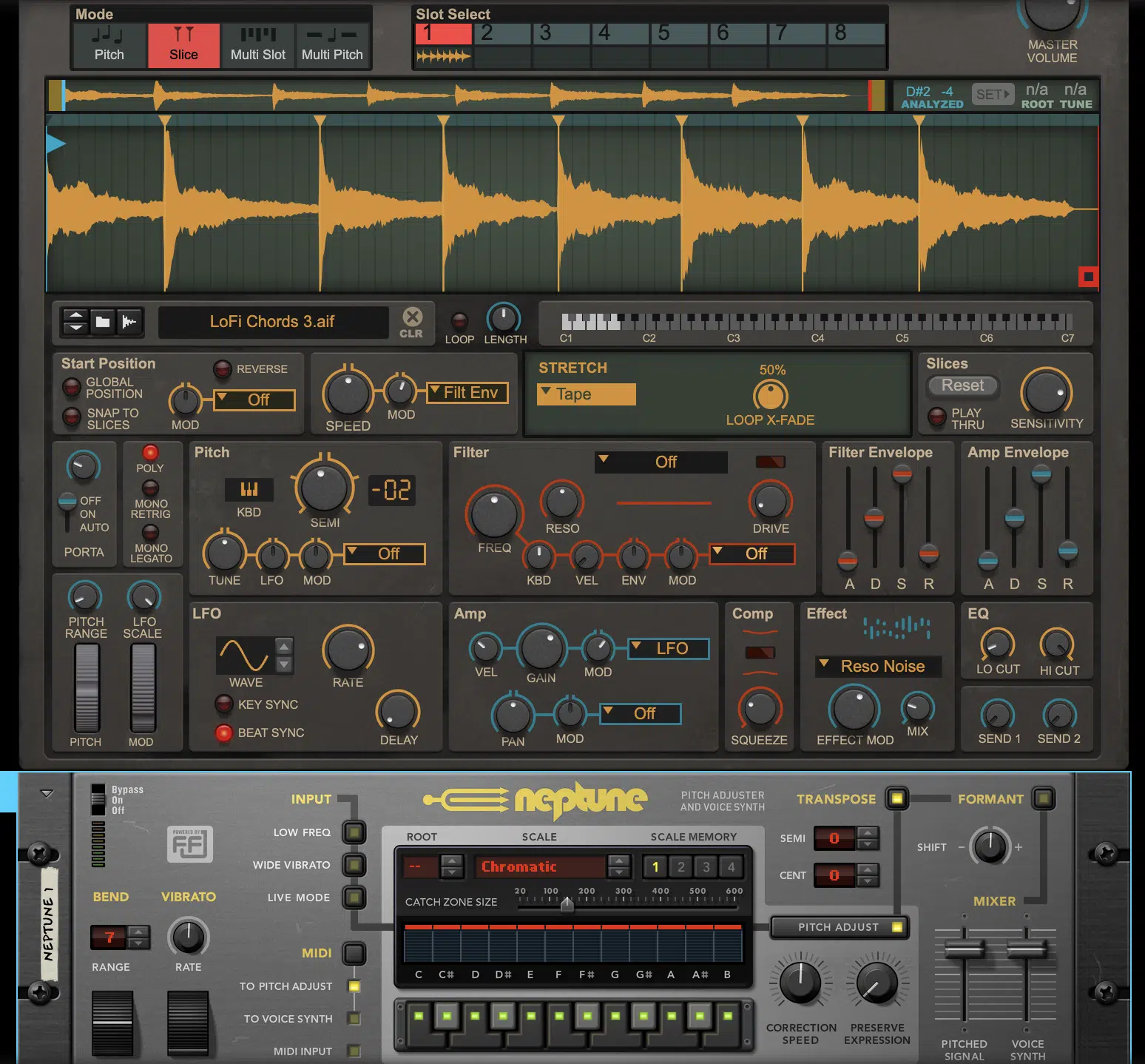
Chopping samples is an art form at the core of many music genres, particularly hip-hop and electronic music.
This technique involves:
- Dissecting a piece of audio
- Extracting select portions
- Reassembling them to create something new
It’s comparable to a chef deconstructing ingredients to create a delicious dish; with each chop offering a unique flavor to the musical composition.
The essence of chopping samples lies in hearing the potential within a sample, visualizing its possibilities, and meticulously sculpting it into a new masterpiece.
This process is not just technical 一 it’s creative and subjective.
What one music producer hears in a sample, another might miss entirely.
The chops (when isolated) might seem basic, but once sequenced and layered with other elements, they can bring a unique rhythm, melody, and texture to your tracks.
The true beauty of chopping samples is found in its infinite possibilities, allowing for the transformation of originality from pre-existing sounds.
Sample chopping involves a deep understanding of musical elements such as:
- Timing
- Pitch
- Rhythm
It requires an ability to dissect a sample at its most compelling point; creating loops and segments that can be manipulated to fit seamlessly within a composition.
This skill is honed through practice and a keen ear for detail.
After this article, you can transform a simple sound snippet into a captivating musical masterpiece.
The Tools You Need to Start Chopping Samples
Armed with the knowledge of chopping samples, let’s explore the essential tools that will form the backbone of your sampling journey.
Each will play a pivotal role in shaping and refining your sonic creations.
#1. DAW/Audio Editor
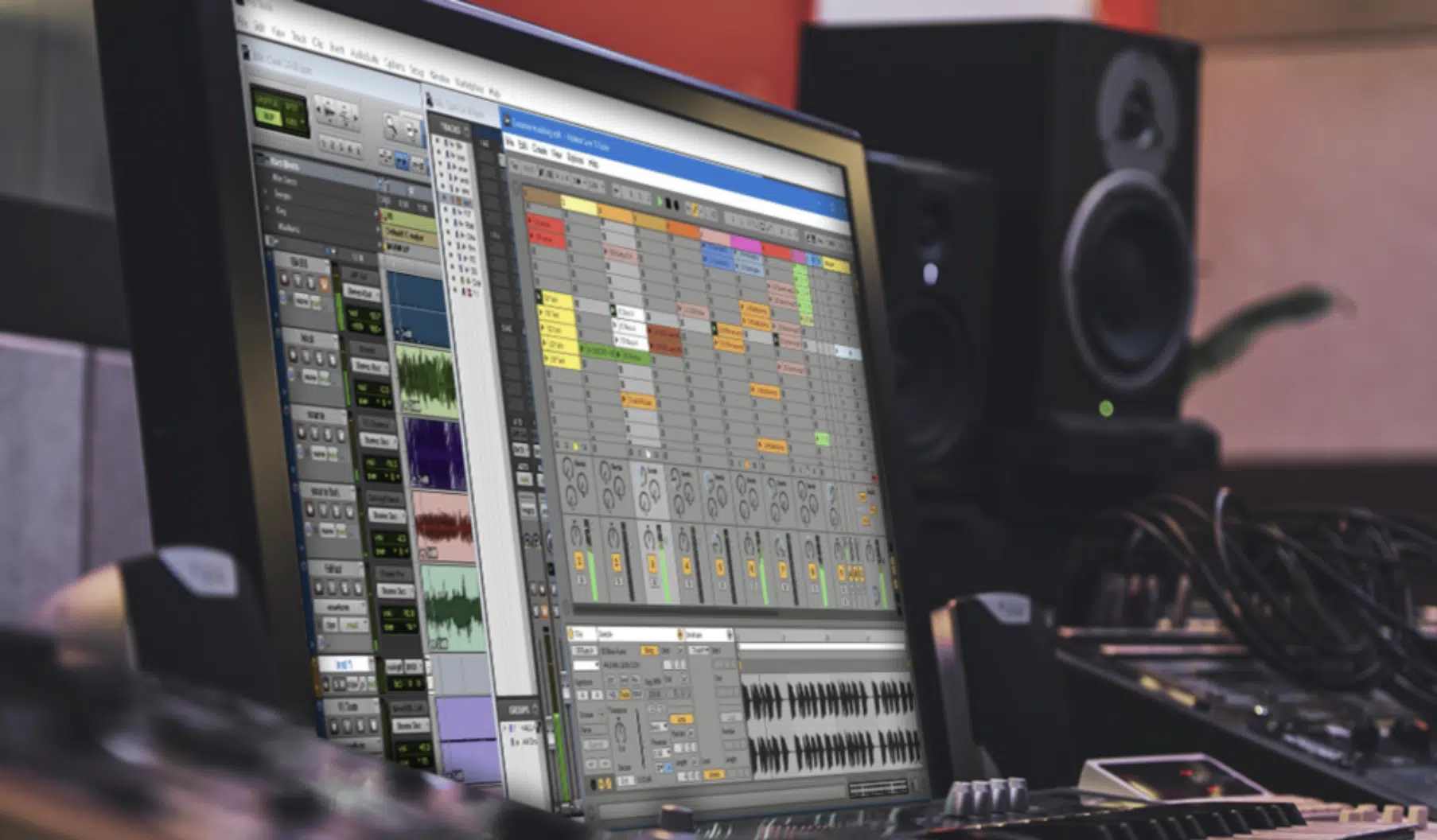
A Digital Audio Workstation (DAW) is the canvas upon which you paint your musical ideas.
It’s an indispensable tool that offers a variety of features to:
- Manipulate samples
- Arrange samples
- Refine samples
Programs like Ableton Live stand out, providing an intuitive interface, versatile editing options, and seamless integration of plugins.
This makes it a favorite among professional producers all over the world.
Within the DAW, the audio editor becomes the scalpel 一 enabling precision cuts, adjustments, and enhancements to each sample.
The manipulation of waveforms, the tweaking of frequencies, and the layering of sounds all occur here.
It layers the foundation for your upcoming tracks.
In this digital workspace, plugins further enrich the creative palette, offering additional effects, filters, and functionalities.
They enable producers to experiment with sound textures, dynamics, and atmospheres, pushing the boundaries of what’s possible with chopped samples.
#2. A Sampler That Can Slice Audio Based on Transients
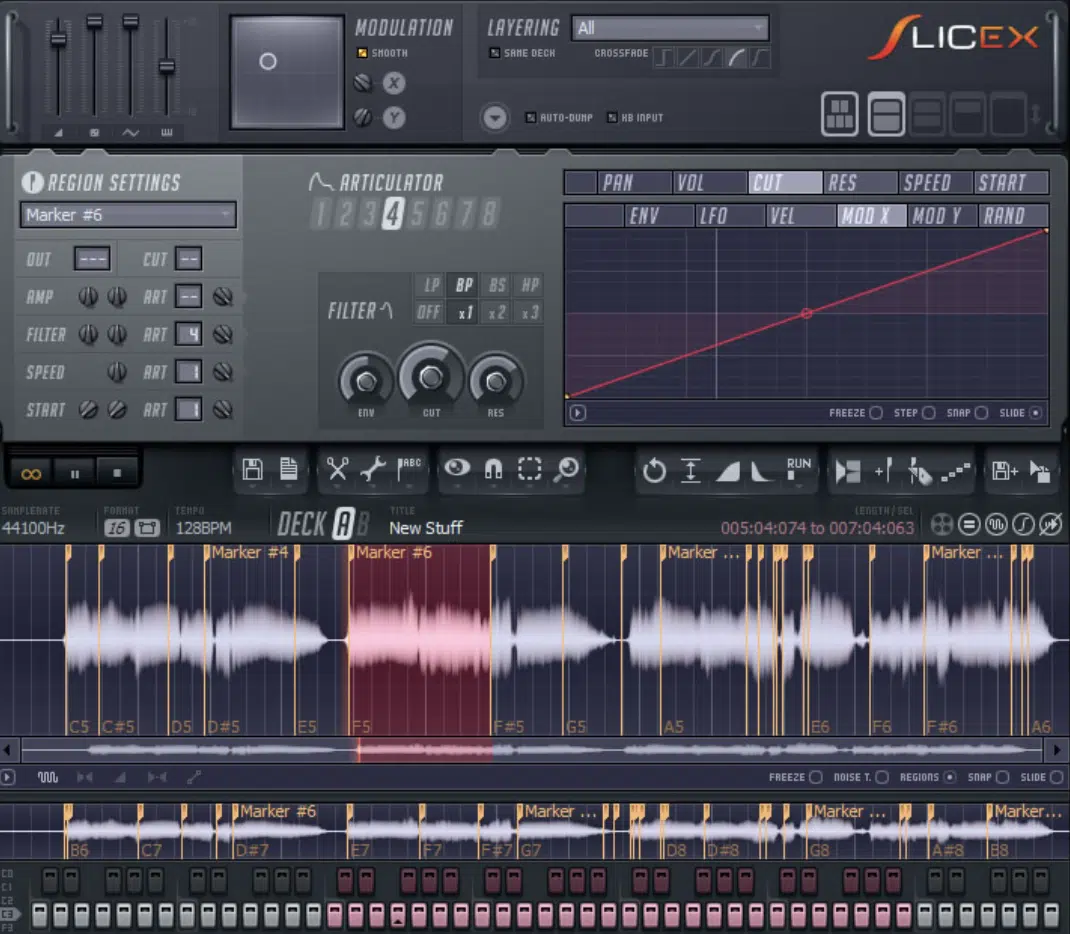
Slice X by Image-Line
A sophisticated sampler acts as the brush in your creative arsenal.
Instruments like Native Instruments’ Maschine excel in slicing audio based on transients (slice mode), allowing for precise isolation of beats and notes.
This capability is crucial in extracting the most impactful and rhythmic parts of a sample 一 forming the backbone of your track.
Understanding and manipulating transients in a sample editor is essential in crafting dynamic chops.
These initial attack phases in a sound wave define the character and punch of a sample and provide the rhythmic elements that drive the track forward.
Experimenting with different slice modes and adapting to the varying needs of each project is part of the sampling journey.
A versatile sampler enables this exploration, offering a range of options to:
- Shape your sound
- Tweak your sound
- Refine your sound
If you’re wondering what in the world transients are or more advanced tips, tricks, and techniques in which to use transients in the hip-hop game, we break everything down.
As a music producer attempting to master chopping samples, transients are important to understand.
#3. MIDI Controller/Drum Pads
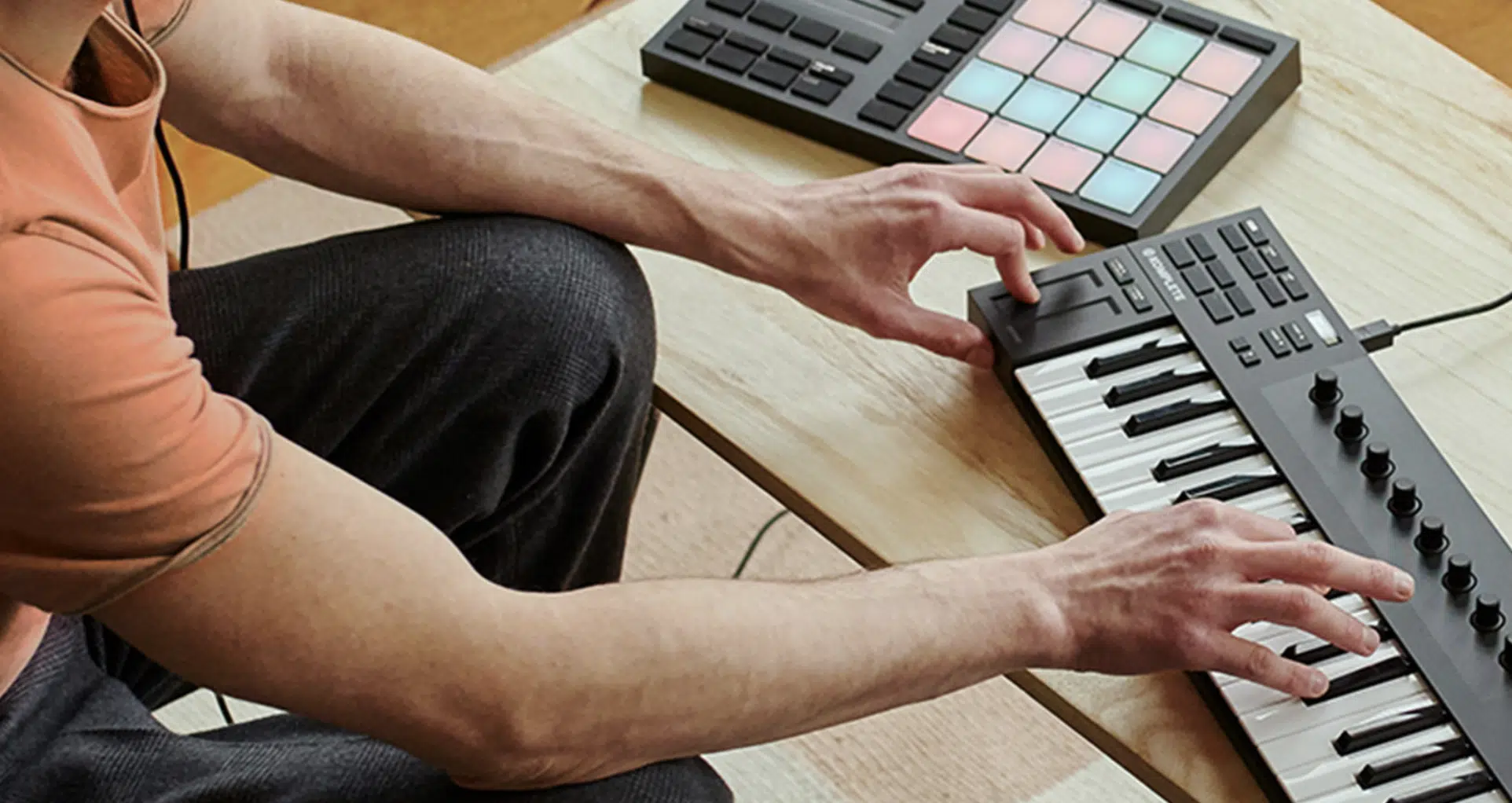
Incorporating a MIDI controller, especially one equipped with drum pads (like the Akai MPC), brings a tactile dimension to the sampling process.
MIDI controllers provide real-time interaction with the samples and allow for spontaneous rhythm creation and pattern experimentation.
The physical interaction with drum pads enhances the connection between the producer and the music.
It offers a level of control and expressiveness, creating a deeper understanding of:
- Rhythm
- Dynamics
- Musical structure
As each pad is struck, a rhythm is born, a groove is established.
This hands-on approach is instrumental in building the framework of the track 一 laying down the beats that will define the final composition.
NOTE: The Ableton Push, with its grid of pads and controls, offers a hands-on experience and intuitive workflow for chopping samples.
It can provide you with seamless integration into Ableton Live and have you load, edit, and chop samples in various different ways like a professional.
#4. Viable Samples from your Sampler Library
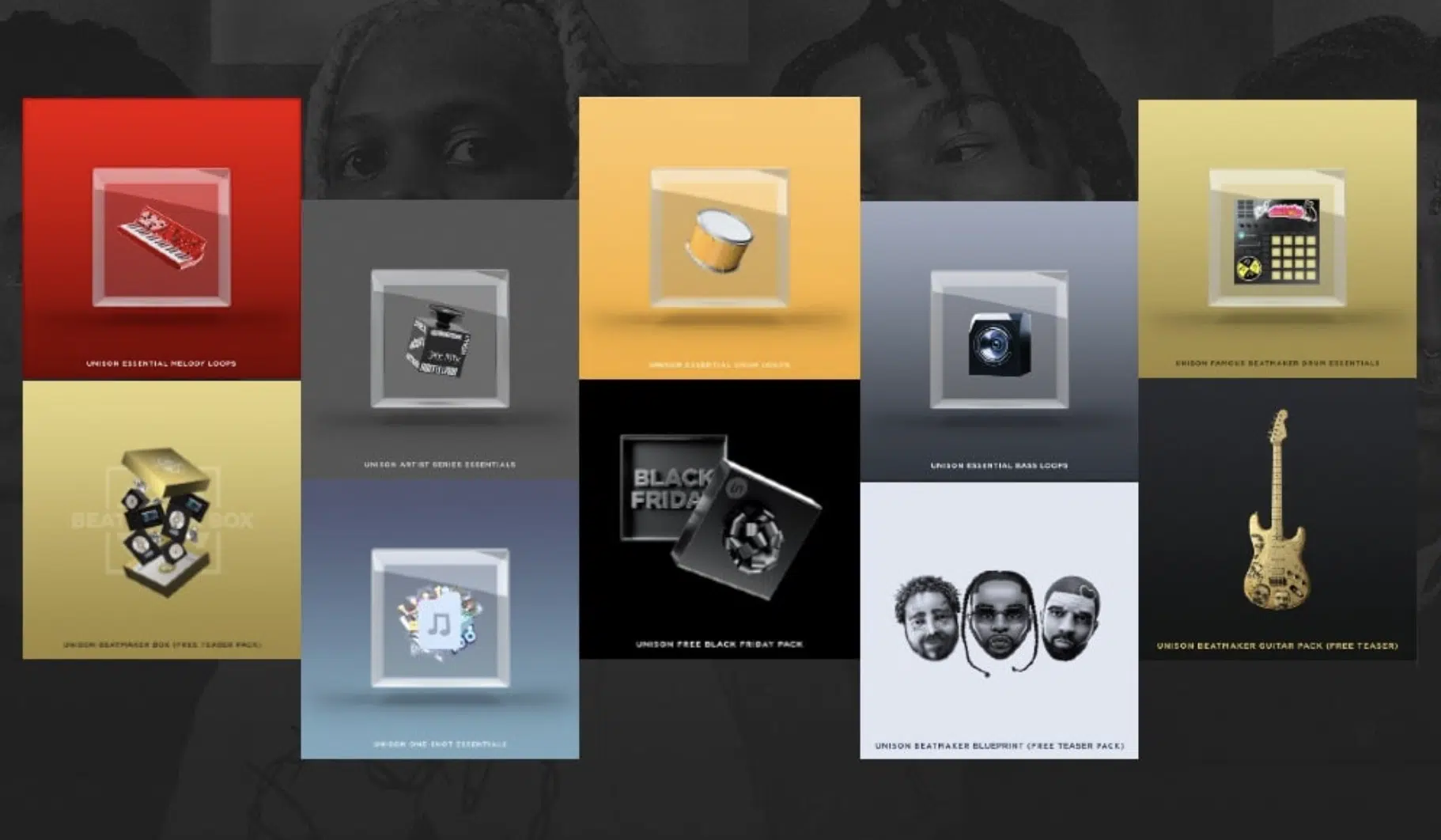
A diverse and well-curated sampler library is a treasure trove of sounds from which you draw inspiration.
It’s essential to gather a range of genres, textures, and tones 一 providing a rich palette to explore and experiment with.
Selecting the right samples is a critical first step in the chopping process.
The chosen sounds:
- Set the overall mood
- Establish the theme
- Give you a great starting point
Digging through the library, discovering hidden gems, and experimenting with unconventional sounds are parts of the creative adventure.
Each unearthed sample holds the potential to spark inspiration to contribute a unique element to the auditory tapestry being woven.
We’ve got you covered if you’re looking for high-quality samples (at ZERO cost).
Understanding Sample Slicing
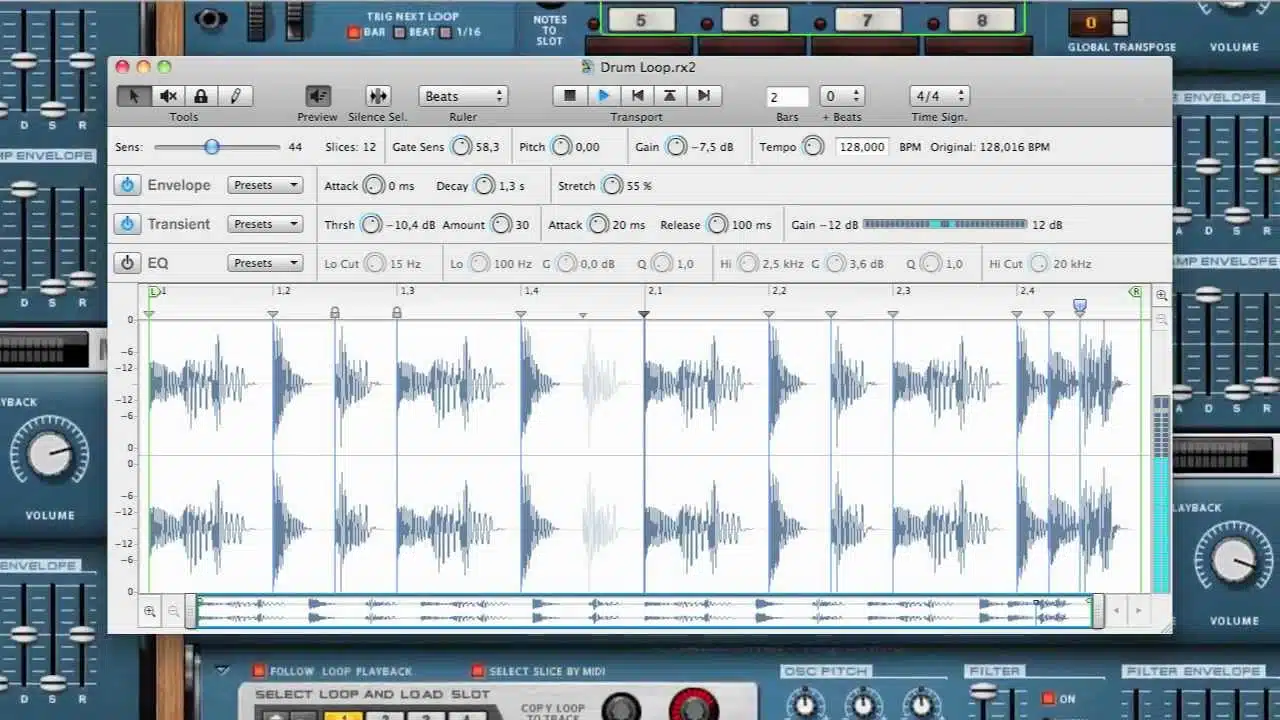
Sample slicing is a fundamental step in the chopping process, laying the groundwork for how the final beat will unfold.
This technique involves dividing a sample into smaller segments or ‘slices’ that can be individually manipulated and rearranged.
When chopping samples, a nuanced understanding of slicing is crucial.
It dictates the fluidity and cohesion of the rearranged sample and impacts your unique track’s overall vibe/groove.
The precision with which slices are made can make or break a composition.
You must pay careful attention to the natural rhythm and flow of the sample, ensuring that slices align with the beats, bars, or even the subtle nuances of the audio waveform itself.
A well-sliced sample can be likened to a puzzle, with each piece fitting perfectly, ready to be rearranged into various configurations.
NOTE: You can use specific tools and music production software that allow you to visualize the waveform of a sample, aiding in the identification of optimal slicing points.
These visual cues are invaluable, helping to pinpoint:
- Transients
- Peaks
- Moments of silence within the audio
You can lay down a solid foundation by mastering the art of slicing.
You can build intricate, harmonious, compelling compositions that help your music stand out and shine.
Techniques for Chopping Samples
With a foundational understanding of sample slicing, let’s delve deeper into the creative techniques available for chopping samples.
Each method offers a unique perspective and approach to shaping the sonic landscape and crafting a distinctive auditory experience.
-
Basic Slicing Techniques
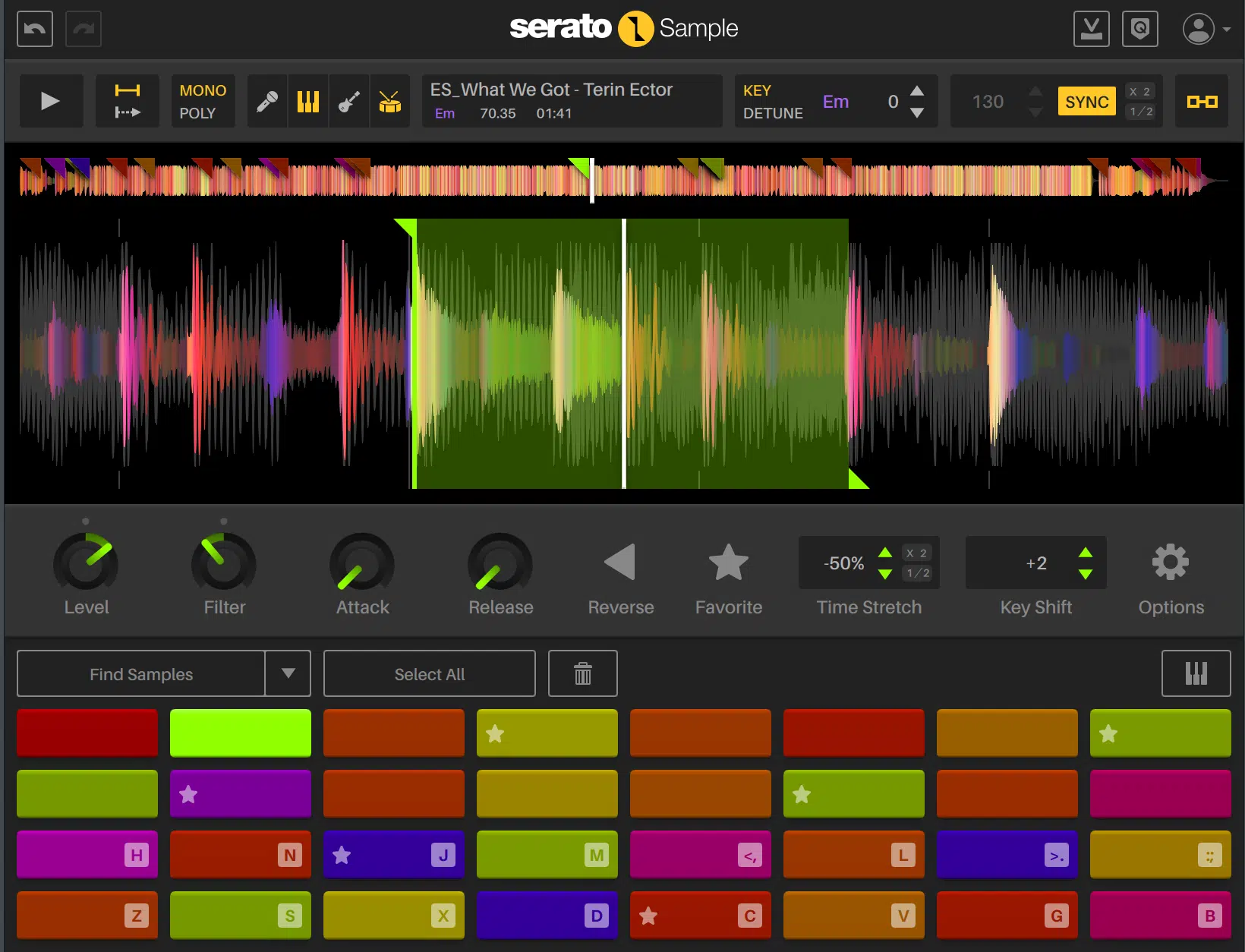
Basic slicing is the initial step into the world of sample manipulation.
It focuses on dividing a sample into segments at its most obvious points (typically at the start of each beat or bar).
This method is fundamental when you chop samples, yet it opens the door to various creative possibilities.
Even with basic slicing, the rearrangement of segments can lead to the emergence of unique rhythms and melodies, breathing new life into an old sound.
Producers venturing into basic slicing should focus on developing a keen sense of timing and rhythm.
Understanding where a beat naturally begins and ends is essential to creating seamless loops and avoiding unwanted clicks or pops in the composition.
An example of basic slicing in practice is the resequencing of drum beats from a classic break.
This leads to the formation of a distinctive rhythm that serves as the backbone of any and every track.
Basic slicing is not just about cutting and rearranging 一 it’s also about exploring the potential within each slice.
You can try experimenting with:
- Changing the pitch
- Messing with the tempo
- Adding effects to individual segments
Discovering how these vital alterations can enhance the overall composition, especially in hip-hop.
This exploration lays the groundwork for more advanced techniques.
It builds a foundational skill set that you can expand upon as you delve deeper into the art of chopping samples.
-
Finding the Right Chops
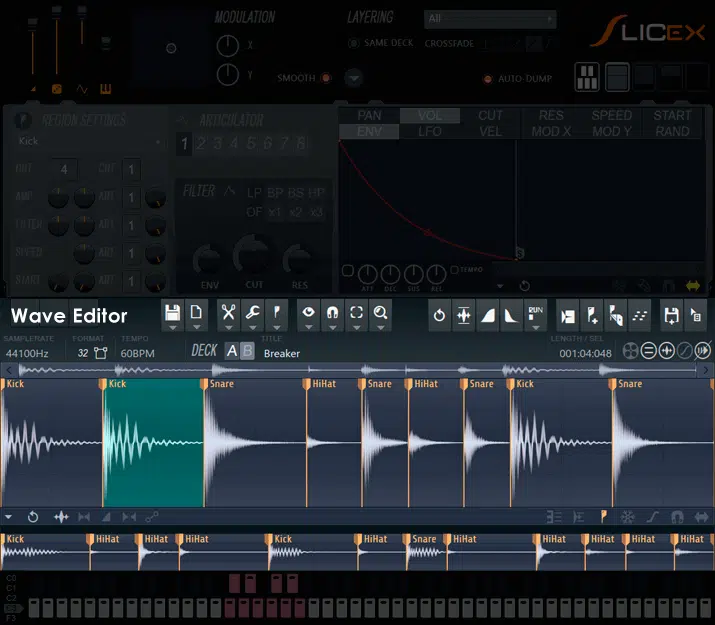
With the slices in hand, finding the right chops becomes the main focus, rightfully so.
Discovering the most ideal chops for your specific needs involves:
- Experimenting with the arrangement of the slices
- Adjusting their order
- Playing with their timing
- Manipulating their pitch
Remember, the goal is to create a rhythmically compelling and melodically intriguing sequence.
This stage of the process is characterized by trial and error, by playing around with different combinations and listening to the results.
It’s about finding the balance between predictability and surprise, harmony and dissonance, to craft an engaging and emotionally resonant piece.
Each rearrangement brings a new perspective, a fresh take on the original sample.
It’s a journey of discovery, where each iteration brings you one step closer to realizing your creative vision and crafting a piece that is uniquely your own.
-
Utilizing Slice Markers & End Points
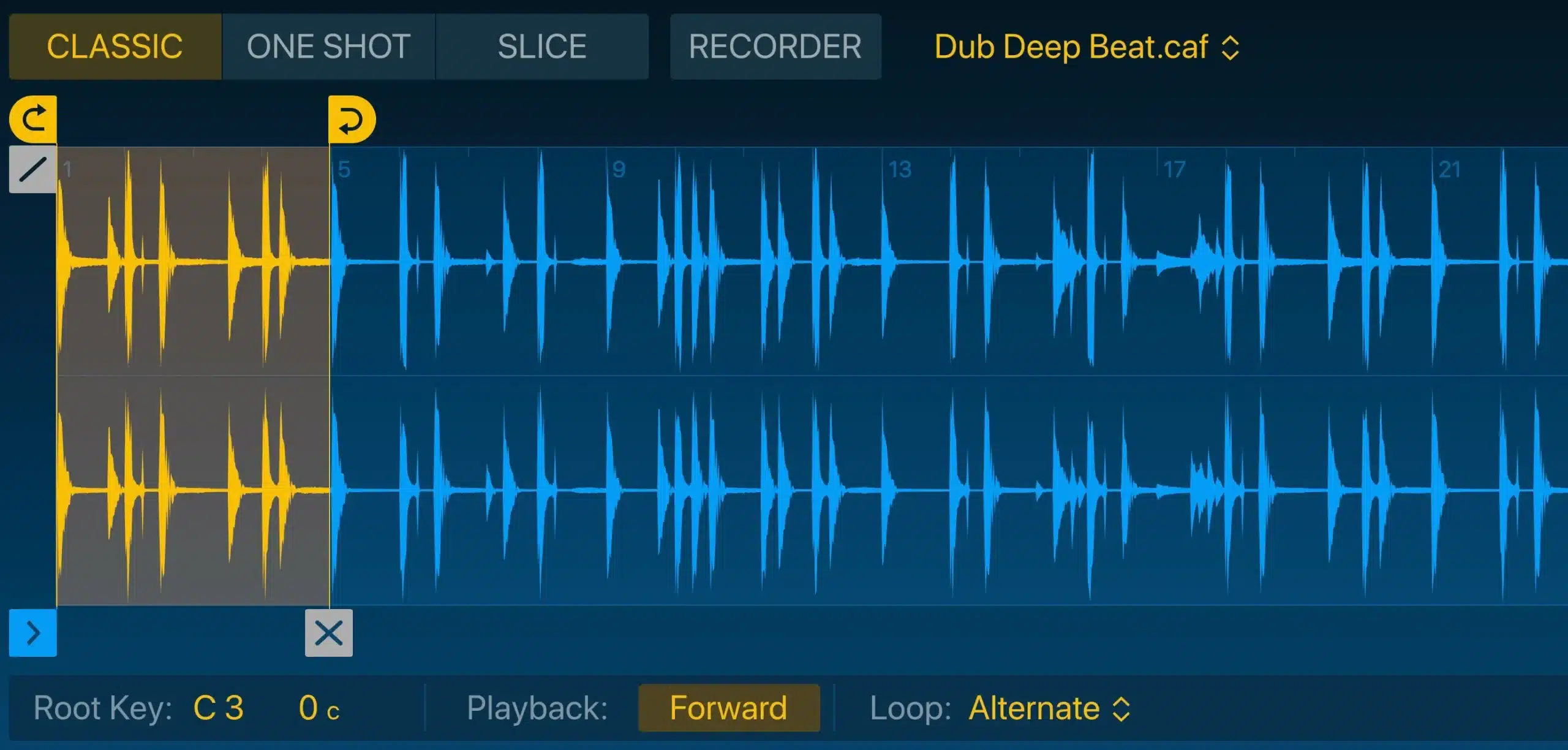
Utilizing slice markers and endpoints is an advanced technique that allows for greater precision and control when you chop samples.
- Slice markers: Used to pinpoint the start of a new segment within the sample.
- Adjusting the end points: Ensures that each slice is trimmed to perfection.
This meticulous approach allows for seamless transitions between slices, minimizing any audible gaps or abrupt changes in the composition.
An example of this technique in action is isolating individual notes or beats within a melody.
This enables you to successfully rearrange or repeat specific elements, creating intricate patterns and variations.
Adjusting the end points of each slice ensures that the transitions are smooth 一 maintaining the natural flow of the music while introducing a new rhythmic structure.
Mastering slice markers and endpoints requires a detailed understanding of the sample’s waveform and a discerning ear for musical nuances.
This knowledge can help you identify the subtle inflections, transient peaks, and moments of silence.
These factors dictate the optimal placement of markers and endpoints.
The mastery of this technique empowers you to manipulate samples with surgical precision, crafting compositions that are both intricate and harmonious.
Creating Unique Patterns From Your Chops
When it comes to chopping samples, creating unique patterns from your chops is like painting on a sonic canvas.
This is where your individuality as a music producer shines, crafting rhythms and melodies that are unmistakably yours.
Let’s break down how to turn those sample slices into compelling patterns that make your tracks stand out.
#1. Identify the Groove.
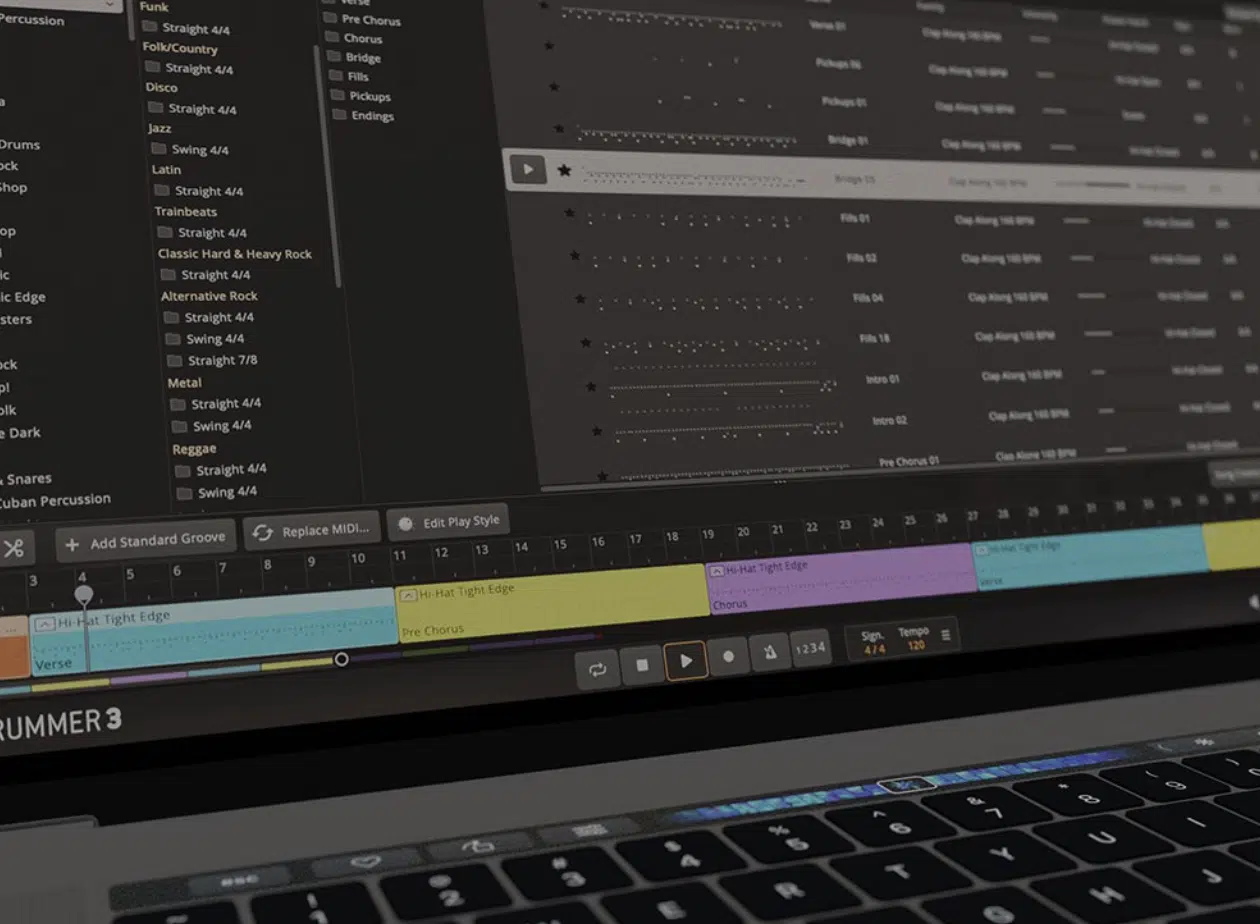
Start by identifying the groove that best suits the vibe you’re aiming for.
For example, if you’re working on a lo-fi hip-hop track, you might look for a relaxed, laid-back groove.
On the other hand, for an energetic trap track, you’d likely opt for a more rapid, intense rhythm.
Experiment with the placement of your chops on the grid 一 shifting them around until you find a rhythm that feels just right.
#2. Layering & Texturing
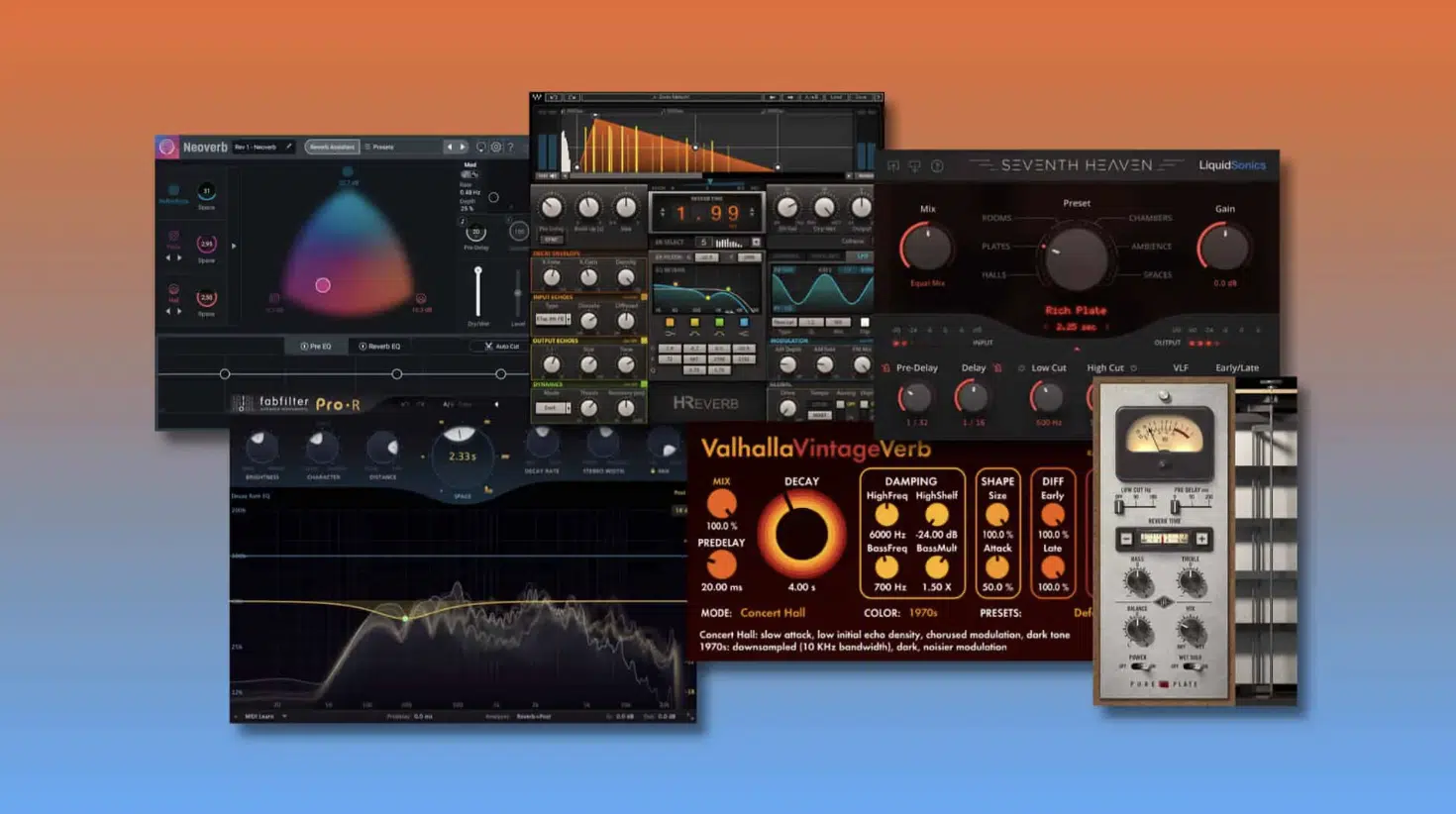
Layering is your best friend when it comes to creating depth, and you can try stacking different chops on top of each other to build a fuller sound.
For instance, you can layer a hip-hop vocal chop with a hip-hop melodic instrument chop to create a harmonious blend.
Additionally, texturing can be achieved by adding effects like reverb or delay.
This gives your patterns a sense of space and can significantly alter the mood of your track.
#3. Playing with Pitch and Tempo
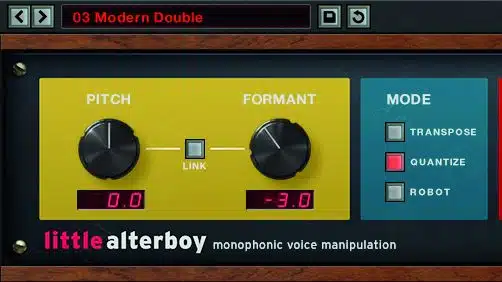
Altering your chops’ pitch and tempo can add variety and interest to your tracks.
For example:
- Pitching down a vocal sample 一 Can give it a moody, atmospheric feel.
- Increasing the tempo 一 Can add energy and drive.
Experimenting with these elements can help you discover unexpected and exciting pattern variations.
#4. Sequencing for Dynamic Structure
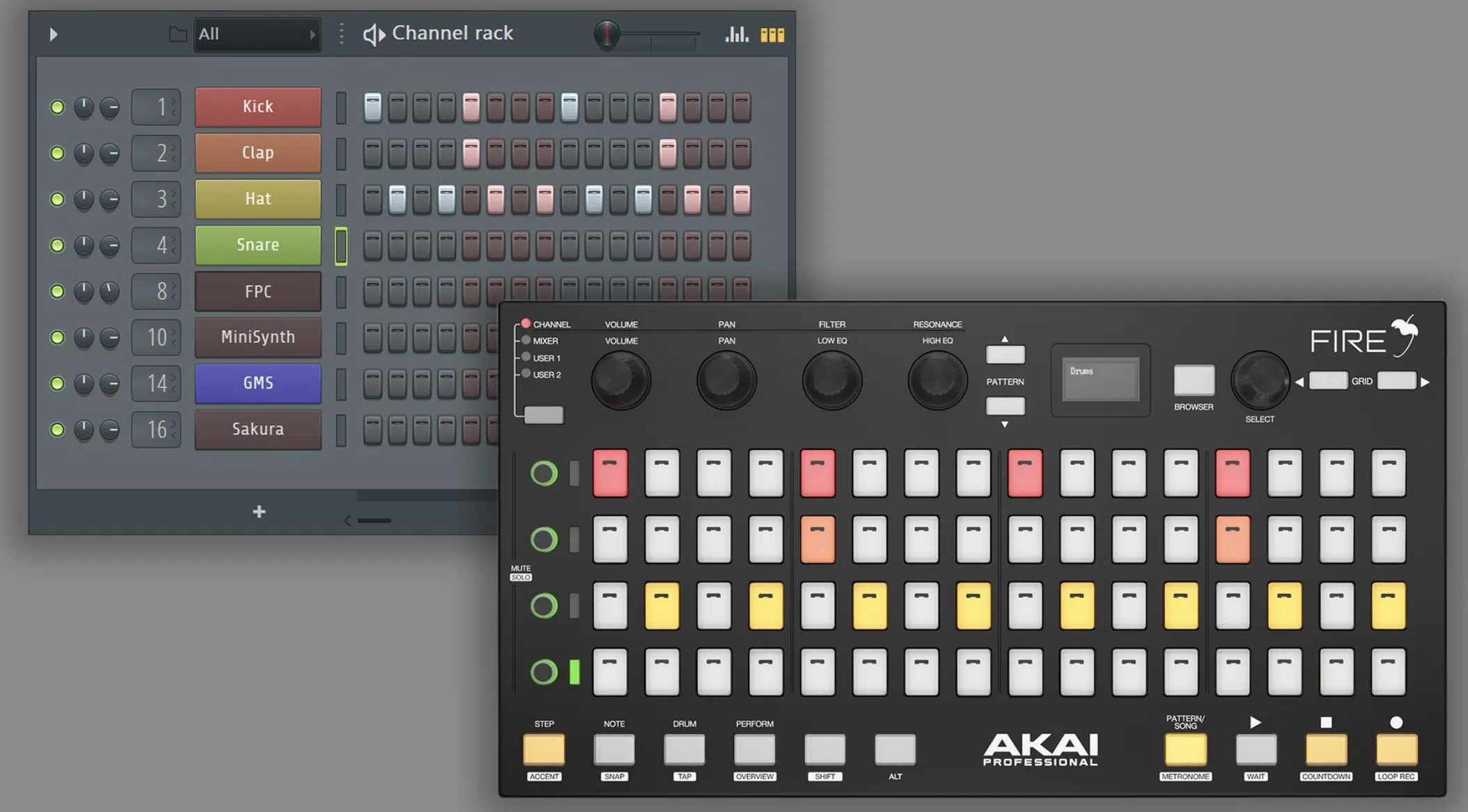
Building a dynamic structure is key to keeping the listener engaged.
Think about how you can arrange your patterns to create tension and release…
For example, you might use a repetitive hip-hop sequence for the verse and then introduce a new pattern for the chorus to add a sense of elevation.
Playing around with the arrangement of your patterns can result in a more captivating and well-rounded composition.
NOTE: By experimenting with the placement, layering, pitch, and sequencing of your chops, you open up a realm of possibilities for crafting distinctive patterns.
This creative process is a journey of discovery, where even the smallest tweak can lead to a groundbreaking musical moment and make your tracks resonate on a whole new level.
Creative Approaches to Sample Chopping
When aspiring to master sample chopping, going beyond conventional methods and exploring creative approaches can make your sound distinct.
Let’s delve into some advanced techniques that will help you develop a signature style and leave a lasting impact on your audience.
-
Experimenting with Multiple Samples
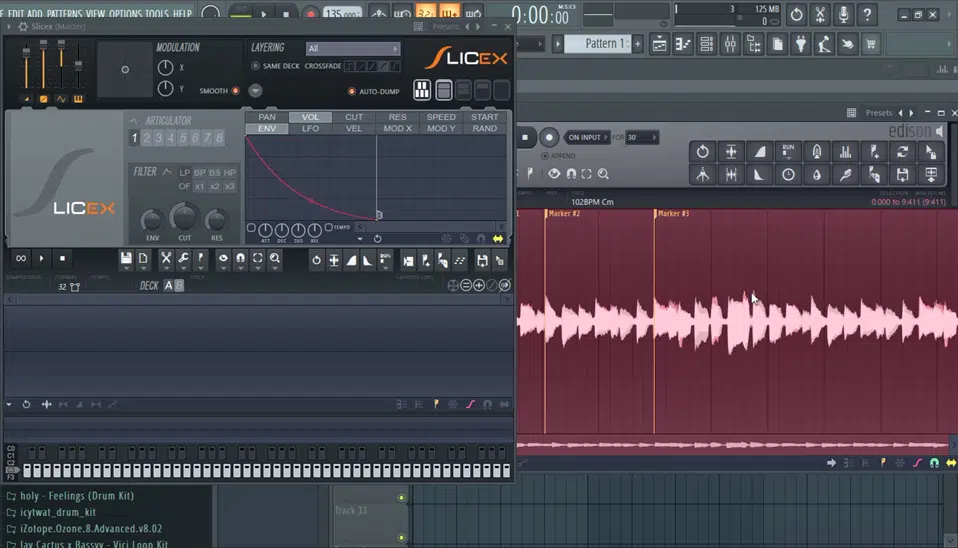
Incorporating multiple samples into a composition is a treasure trove of untapped potential.
You can weave a multifaceted auditory tapestry by fusing textures, tones, and rhythms from different sources.
For instance, combining a jazz piano sample with an afrobeat drum loop can create an unconventional yet harmonious rhythm.
One that captivates the listener and sets the track apart from all the competition.
NOTE: When working with multiple samples, it’s essential to be mindful of the potential for clashing elements.
Balancing the following sample parameters is crucial to maintaining harmony and cohesion with a track:
- Volume
- Frequency
- Timing
Many music producers often find themselves fine-tuning each element, which is something you should definitely do.
It ensures that every sample contributes to the overall narrative of the composition without overshadowing the others.
-
Transposing Multiple Samples from Different Keys
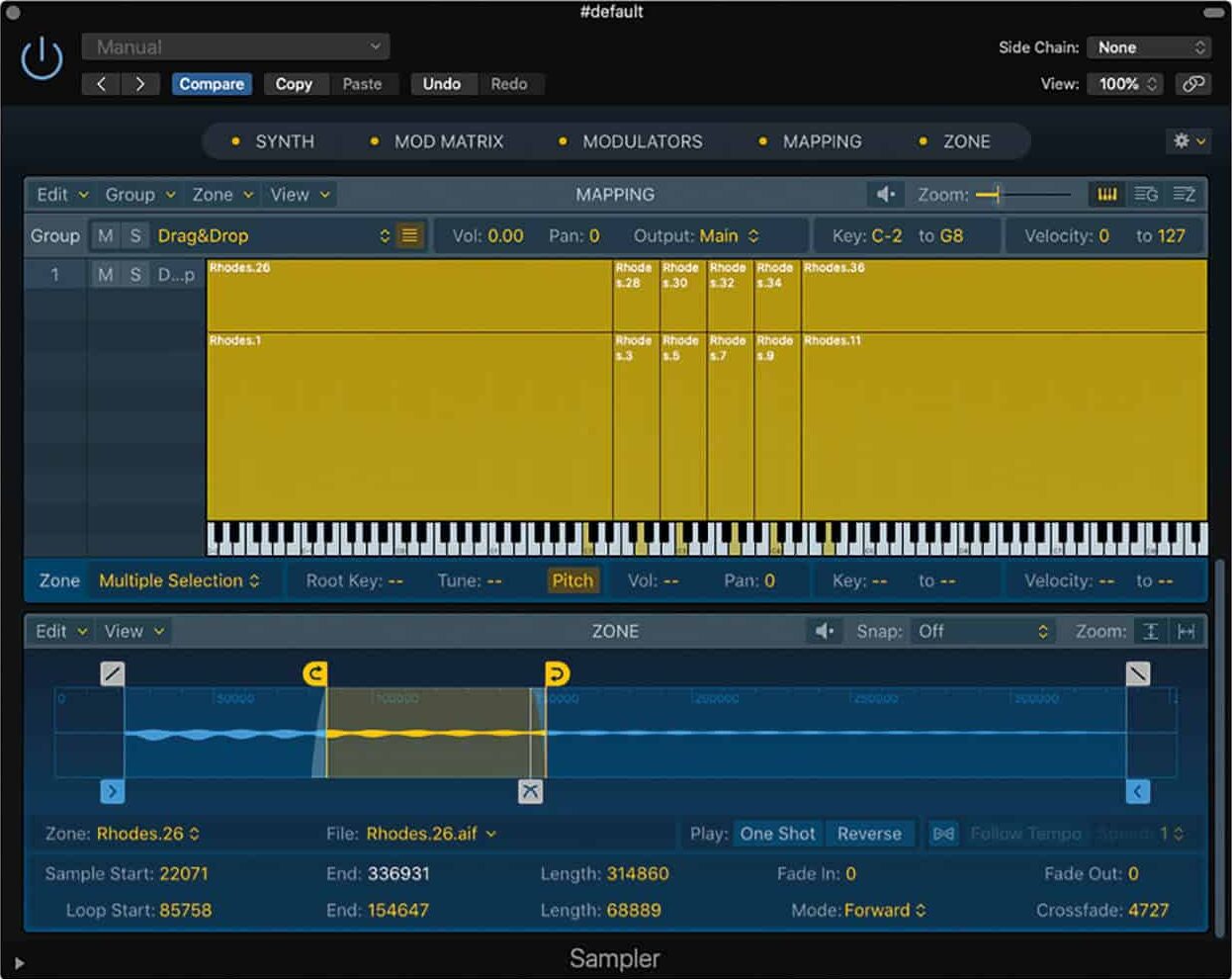
Transposing samples from different keys is a nuanced technique that, when executed well, can harmonically align disparate sound elements.
This method involves adjusting a sample’s pitch to match the composition’s key, guaranteeing a seamless integration of varied musical fragments.
For example, transposing a vocal sample from a major key to fit a composition in a minor key can evoke a completely different emotion.
This can successfully add depth and complexity to your track.
Mastering the art of transposition requires a keen ear for harmony and a deep understanding of music theory.
You must be adept at:
- Recognizing key signatures
- Discerning harmonic relationships
- Predicting the emotional impact of key changes
The careful application of this technique can result in a rich and balanced track where every element coexists in harmonic unity.
The exploration and mastery of transposition open up a realm of possibilities.
It challenges your creative and technical faculties 一 encouraging you to think outside the box and break free from your comfort zone.
The result is a uniquely blended sound that is a testament to innovative spirit and technical prowess.
-
Manipulating Audio for Unique Beats in Your Desired Tempo
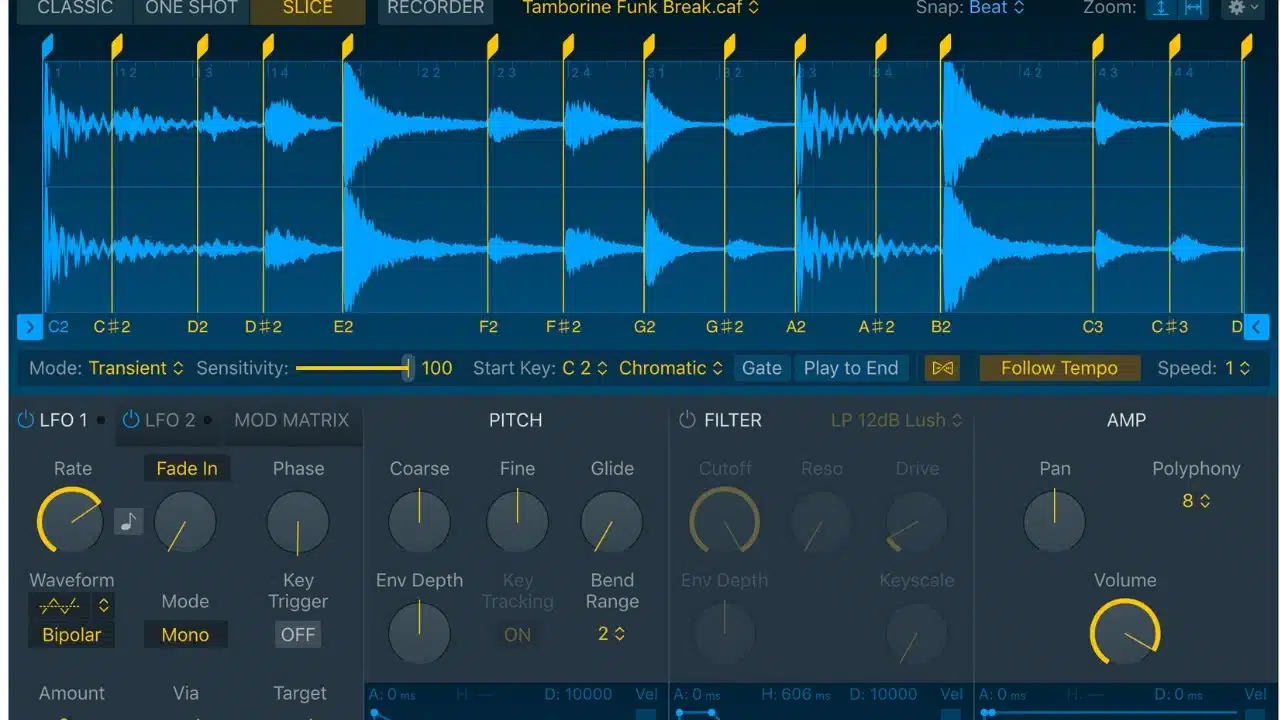
Crafting distinctive beats requires a deft touch in manipulating audio to suit your desired tempo.
This involves adjusting the speed of the sample without altering its pitch, which maintains the integrity of the original sound while fitting it into the rhythm of the composition.
For instance, slowing down a fast-paced drum loop can reveal hidden intricacies in the rhythm 一 providing a fresh perspective on a familiar sound.
Achieving the perfect tempo necessitates thoroughly understanding time-stretching algorithms.
As well as their overall impact on sound quality.
You must navigate the delicate balance between preserving the original texture of the sample and ensuring its flow within the new tempo.
This intricate dance between preservation and transformation gives the beat unique character and appeal.
Manipulating audio for distinctive beats and sampling is a journey of discovery and refinement.
Start by:
- Experimenting with different tempos
- Exploring the nuances of rhythm
- Uncovering the hidden potentials within each sample
The outcome is a tailor-made beat that resonates with your artistic vision and captivates the listener with its originality and finesse.
Plus, of course, it guarantees you’re working within the desired tempo as well.
-
Mastering Slice Points & Slice Markers
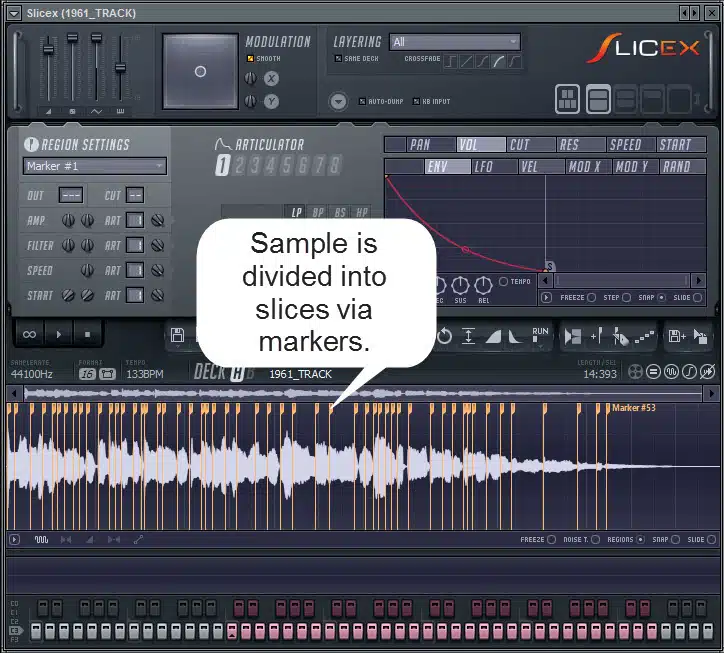
Slice points and slice markers are pivotal tools in the arsenal of a beat-maker.
Mastering their use can significantly enhance the precision and fluidity of your sample chopping process.
Slice points enable you to isolate specific sample segments, allowing for detailed manipulation and rearrangement.
For example, isolating and rearranging individual notes or beats within a sample can create new melodies and rhythms.
Understanding the intricacies of setting accurate slice points (individual slices) and markers is essential when working with a chopped sample.
This involves:
- Recognizing transient peaks
- Zero-crossing points
- Rhythmic structures within the sample
A well-placed first slice point ensures seamless looping and transition between slices, contributing to a smoother and more polished composition.
Plus, the creative use of slice markers can facilitate dynamic rearrangements and variations within a track.
By experimenting with slices’ order, pitch, and timing, you can craft different patterns and textures 一 keeping the listener engaged throughout the composition.
Mastering these techniques requires patience and practice but unlocks endless creative possibilities and ensures your track sounds good and captivating.
It can help you redefine the boundaries of music production and ensure your tracks (and chop) are never basic, boring, or underappreciated again.
Bonus: Experimenting with Drum Breaks & Drum Kits
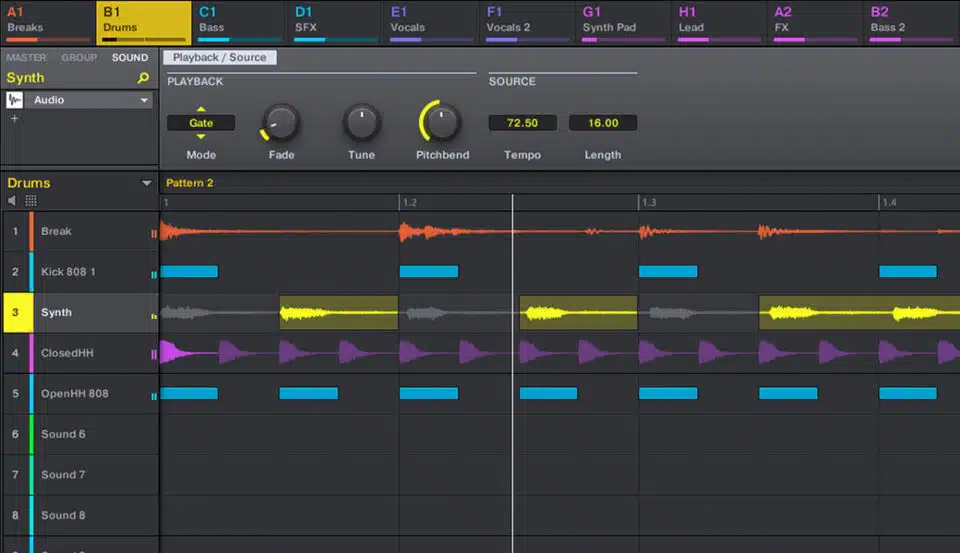
In modern music production, drum breaks and drum kits have become a super beneficial production technique for crafting unique sounds.
Chopping these elements can turn a simple beat into a rhythm that carries the signature of your music, adding a layer of individuality to your tracks.
#1. Drum Breaks
A drum break is a musical interlude, a snippet of a track primarily consisting of percussion.
You can isolate specific hits and grooves by dissecting a drum break and incorporating them into your tracks for added flavor.
For instance, chopping up vintage drums and rearranging the slices can breathe new life into an old sound 一 producing a new sample that stands out in a mix.
#2. Drum Kits and Drum Racks
A drum kit is a collection of sampled drum sounds, while a drum rack is a tool in a DAW that allows you to play and sequence those sounds.
Chopping samples from drum kits and assigning them to a drum rack provides a vast playground for creativity.
This technique helps you manipulate each sound individually 一 applying effects, adjusting pitch, and layering to create a unique sonic palette.
If you’re looking for the absolute best drum kits of 2023, we’ve got you covered.
#3. Hardware Samplers
The use of hardware samplers in chopping drum breaks and kits offers tactile control and a distinct character to the sound.
A hardware sampler can add warmth and grit to your chopped samples, resulting in textures that are hard to replicate with a simpler device or software alone.
This approach can lead to discovering unexpected harmonies and rhythms and contribute to the uniqueness of your sound (whether it’s hip-hop, trap, EDM, etc).
Chopping Samples: Final Thoughts
Whether you’re crafting a hip-hop banger or an EDM anthem, how you slice and manipulate samples can be the game-changer.
Chopping samples adds unique flavor and texture to your tracks 一 setting them apart in the vast sea of modern music.
Now, if you’re hunting for some killer vocal chops to incorporate into your next project, look no further than these breathtaking Free Vocal Samples.
These aren’t just your regular, run-of-the-mill vocal snippets.
They are curated to resonate with the styles of today’s chart-topping hits across the most popular genres.
The versatility and quality of these vocal samples can elevate your tracks and provide that extra layer of sonic interest.
Remember, creativity knows no bounds in the realm of modern music production.
So, when chopping samples, keep pushing boundaries, exploring, and creating; the world needs some legendary new music.
Until next time…







Leave a Reply
You must belogged in to post a comment.